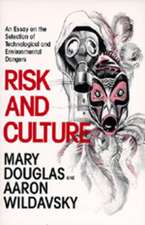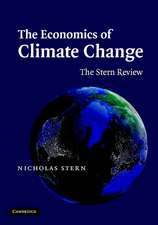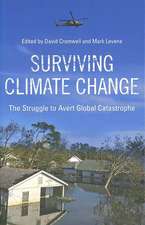The Modern Problems of Electrostatics with Applications in Environment Protection: NATO Science Partnership Subseries: 2, cartea 63
Editat de Ion I. Inculet, Florin Teodor Tanasescu, Radu Cramariucen Limba Engleză Hardback – 30 sep 1999
| Toate formatele și edițiile | Preț | Express |
|---|---|---|
| Paperback (1) | 1223.55 lei 6-8 săpt. | |
| SPRINGER NETHERLANDS – 30 sep 1999 | 1223.55 lei 6-8 săpt. | |
| Hardback (1) | 1229.73 lei 6-8 săpt. | |
| SPRINGER NETHERLANDS – 30 sep 1999 | 1229.73 lei 6-8 săpt. |
Din seria NATO Science Partnership Subseries: 2
- 15%
 Preț: 638.43 lei
Preț: 638.43 lei - 5%
 Preț: 1420.29 lei
Preț: 1420.29 lei -
 Preț: 390.84 lei
Preț: 390.84 lei - 18%
 Preț: 949.90 lei
Preț: 949.90 lei -
 Preț: 401.24 lei
Preț: 401.24 lei - 15%
 Preț: 653.14 lei
Preț: 653.14 lei - 5%
 Preț: 1414.64 lei
Preț: 1414.64 lei - 15%
 Preț: 642.18 lei
Preț: 642.18 lei - 18%
 Preț: 1846.40 lei
Preț: 1846.40 lei - 18%
 Preț: 949.90 lei
Preț: 949.90 lei -
 Preț: 380.07 lei
Preț: 380.07 lei - 15%
 Preț: 643.84 lei
Preț: 643.84 lei - 18%
 Preț: 1839.63 lei
Preț: 1839.63 lei -
 Preț: 416.64 lei
Preț: 416.64 lei - 18%
 Preț: 1234.77 lei
Preț: 1234.77 lei - 18%
 Preț: 1834.90 lei
Preț: 1834.90 lei - 18%
 Preț: 950.96 lei
Preț: 950.96 lei - 15%
 Preț: 655.78 lei
Preț: 655.78 lei -
 Preț: 403.53 lei
Preț: 403.53 lei -
 Preț: 381.98 lei
Preț: 381.98 lei - 18%
 Preț: 1836.94 lei
Preț: 1836.94 lei - 15%
 Preț: 645.47 lei
Preț: 645.47 lei - 18%
 Preț: 946.87 lei
Preț: 946.87 lei - 18%
 Preț: 1227.99 lei
Preț: 1227.99 lei - 18%
 Preț: 1232.57 lei
Preț: 1232.57 lei -
 Preț: 398.15 lei
Preț: 398.15 lei - 18%
 Preț: 1232.71 lei
Preț: 1232.71 lei - 18%
 Preț: 1223.88 lei
Preț: 1223.88 lei - 18%
 Preț: 1228.77 lei
Preț: 1228.77 lei
Preț: 1229.73 lei
Preț vechi: 1499.66 lei
-18% Nou
Puncte Express: 1845
Preț estimativ în valută:
235.34€ • 242.79$ • 199.18£
235.34€ • 242.79$ • 199.18£
Carte tipărită la comandă
Livrare economică 04-18 martie
Preluare comenzi: 021 569.72.76
Specificații
ISBN-13: 9780792359296
ISBN-10: 0792359291
Pagini: 413
Ilustrații: XXIII, 413 p.
Dimensiuni: 155 x 235 x 25 mm
Greutate: 0.79 kg
Ediția:1999
Editura: SPRINGER NETHERLANDS
Colecția Springer
Seria NATO Science Partnership Subseries: 2
Locul publicării:Dordrecht, Netherlands
ISBN-10: 0792359291
Pagini: 413
Ilustrații: XXIII, 413 p.
Dimensiuni: 155 x 235 x 25 mm
Greutate: 0.79 kg
Ediția:1999
Editura: SPRINGER NETHERLANDS
Colecția Springer
Seria NATO Science Partnership Subseries: 2
Locul publicării:Dordrecht, Netherlands
Public țintă
ResearchCuprins
Session I: General Aspects of the Environment Protection and of the Electrostatics Contributions.- The Present Position of the Electrostatics in the Environment Protection and the Canadian Experience.- Development of Electrostatics in Romania and Its Contribution to Environmental Protection.- Some Data Concerning Romania Strategy of Environment Protection.- The Activity of the Electrostatics Society of America in the Field of Environmental Protection.- New Solutions for the Removal of the Pollutants Generated by Electrical Power Plants in Romania.- A Theoretical and Experimental Analysis of the Electrostatic Filters.- New Results in the Field of Esd Research.- Electrostatic Technologies for the Recycling of Non-Ferrous Metals and Plastics from Wastes.- The Miniaturization of Electrostatic Precipitators.- Session II: Methods of Control and Reduction of Air Pollution.- Environmental Protection by Radiation Technology and Laea Activity.- Electron Beam Scrubbing for High Sulphur Flue Gas.- Modelling The Interaction of Plasma “Hot Pockets” with Gas Containing Nitric Oxide.- Treatment of Organic Pollutants by Corona Discharge Plasma.- Non-Termal Plasma Technology for Gas Treatment.- Electron Flue Gases Treatment in Poland.- Use of High Power Electron Beam Radiation for Treatment of Municipal and Industrial Wastes.- Experimental Contributions for So2and Nox Reduction from Combustion Flue Gases by Energetic Electron Induced Plasma Process and Electrical Discharge.- Session III: Methods of Control and Reduction of Water and Soil Pollution.- Ozone Generators.- APPLICATIONS OF OZONE IN WATER TREATMENT: Advantages, Disadvantages and Developments.- Operation of Industrial Effluents.- New Considerations of Ozone Generation and the Influence of Nox in Ozone Production and WaterTreatment.- Recent Advances in the Electrical Decontamination of Soil.- The Role of Mobility in Ehd Pollution Control Techniques.- Electrostatic Pesticide Spraying.- Tests for the Electrostatic Crop Spraying Asa Method of Treatment with Ultra Low Volume.- Charged Liquid Aerosols: Generation, Advantages and Non-Polluting Technologies.











